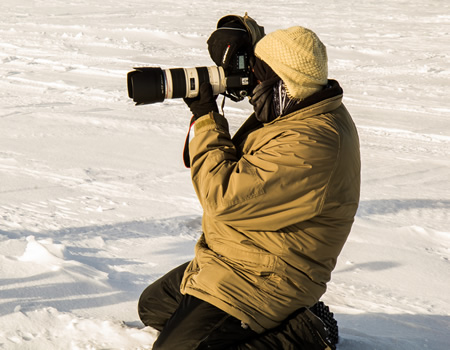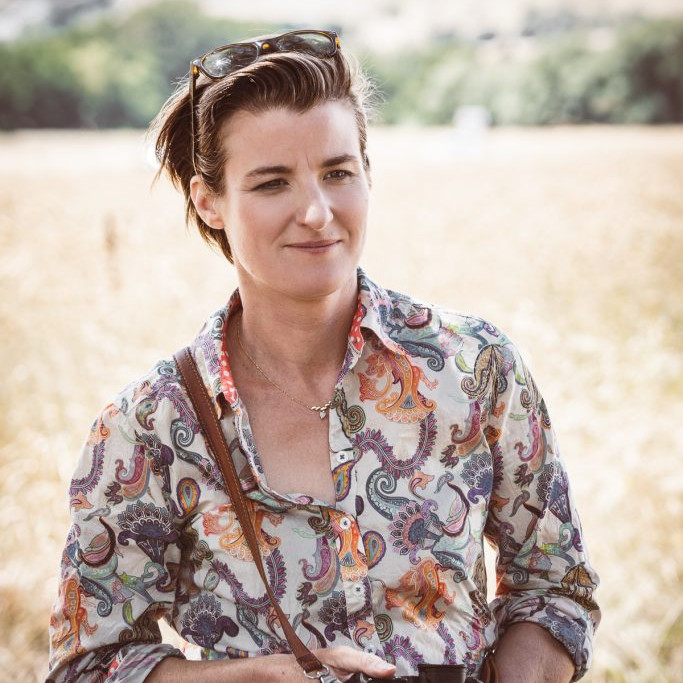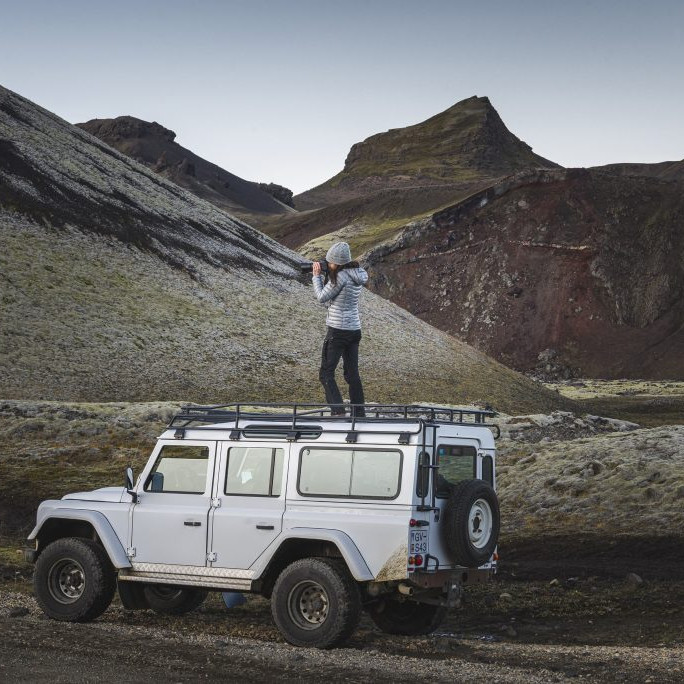Martin Gaudreault Photographer
Early in your career you were the official photographer for the Lac Saint-Jean bicycle crossing, discuss.
Crossing Lac Saint-Jean by bike is a unique event in North America. Imagine cyclists riding a Fat Bike that crosses a 32 km frozen water body in the middle of winter!
This unique event is for those who wish to cross it by bike by taming the Quebec winter on a 32-kilometre linear course made of snow and ice.
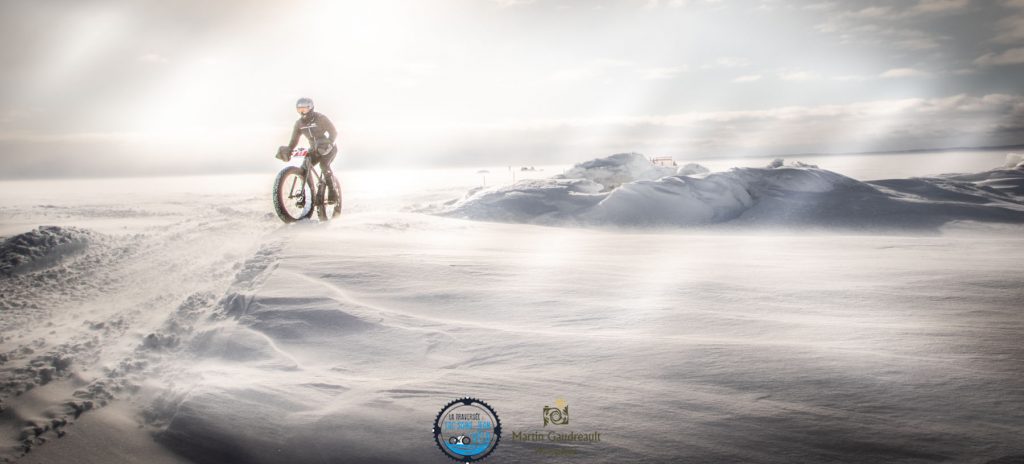
Cold Cyclist #1, Crossing Lac Saint-Jean by Bike, Digital photography, F10 1/500- 14 mm ISO 100
When I was offered to become the official photographer of this event, I decided to embark on this crazy adventure with a certain unawareness of the challenge it represented. My responsibility is to provide images of this event to the media in more than 60 countries. The special character of a 32 km long frozen crossing is unique in North America. It should be noted that Lac Saint-Jean is an inland sea and that in winter, in Quebec, and particularly in Saguenay Lac Saint-Jean, we have temperatures of -35 degrees Celsius.
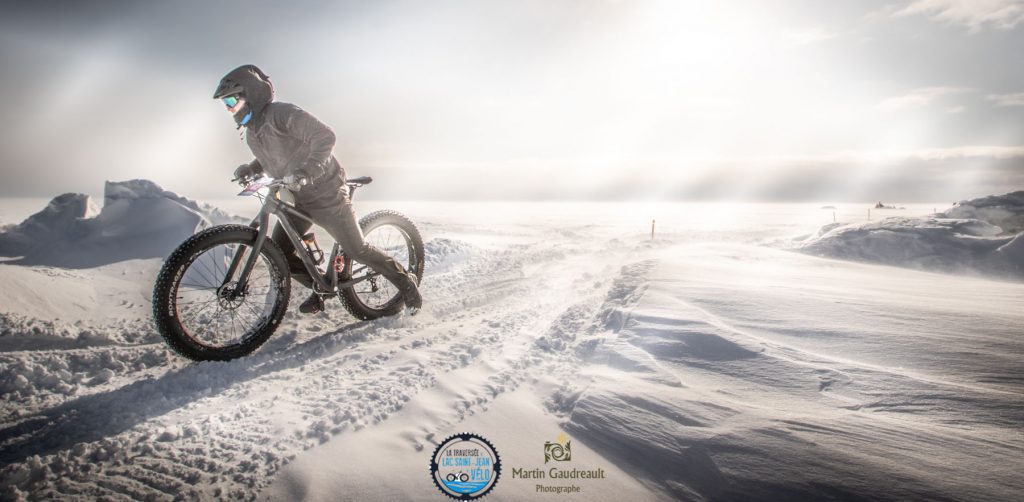
Frosted Adventure, Crossing Lac Saint-Jean by Bike, Digital photography, F5,6 1/500- 175 mm ISO 100
Taking pictures under these conditions becomes difficult for the equipment and for the photographer. When taking pictures, I try to capture the efforts of the participants and to reflect the climatic conditions encountered during the event. In this regard, over the past few years, I have experienced freezing rain, wind from 50 km/h to -30 Celsius, snowstorms and sunny days. Both the photographer and the equipment have succeeded year after year in making this event a unique moment!
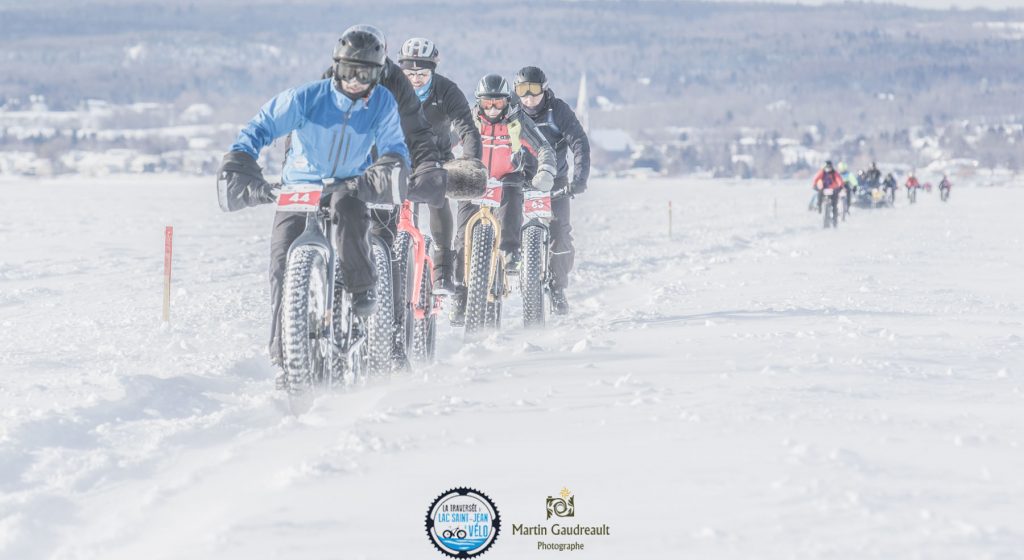
Cold Cyclist #2, Crossing Lac Saint-Jean by Bike, Digital photography, F9 1/500- 14 mm ISO 100
The main difficulty lies in knowing how to capture the movement at the right time and in the right place during such an event. Basic knowledge of photography is essential to achieve this. As I have to operate in a totally white environment, it is necessary to constantly validate the white balance in order to obtain a white snow and not…grey… As the bicycles used are oversized in terms of tires, their cruising speed is relatively low. It is therefore easy to fix the image in order to have an interesting rendering. The use of a slower speed allows to generate images with a certain movement in order to create a panning effect. As temperatures are low in winter, the equipment and especially the batteries must be charged and above all the photographer must have developed tips to keep it warm.
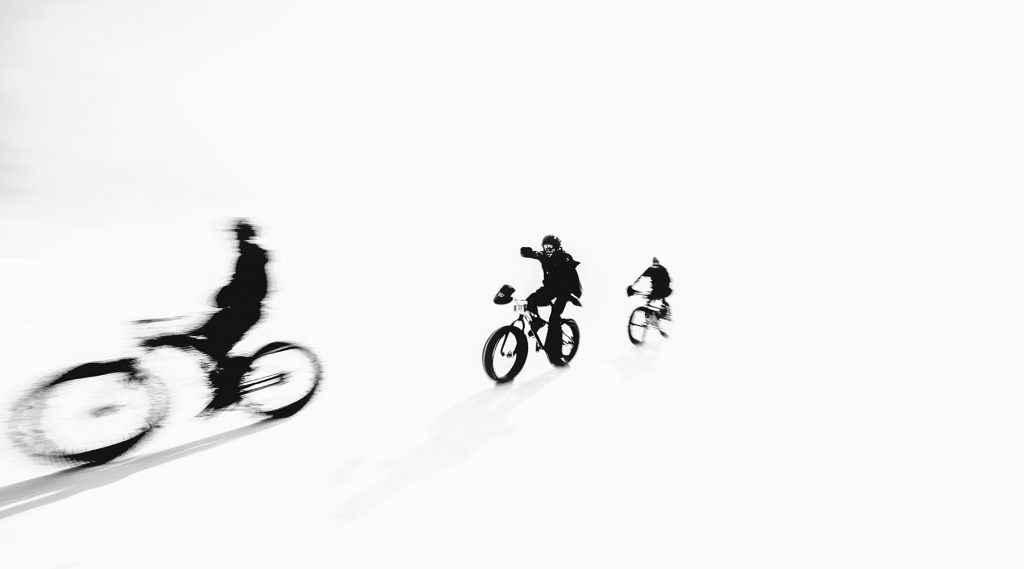
Les Chevaliers de I’Apocalypse, Crossing Lac Saint-Jean by Bike, Digital photography, F22 1/10 10 mm ISO 100,
Photograph exhibition at the Carrousel du Louvre in Paris
Use of the work for the lake crossing.
My images have been used in more than sixty countries; Canada, United States, Belgium, France, Brazil, are just a few examples of their dissemination. One was exhibited at the Carrousel du Louvre in Paris in December 2018 during the Salon National des Beaux-Arts. My photographs are used in specialized magazines (fat bike) or to promote our magnificent region as a first-rate winter destination.
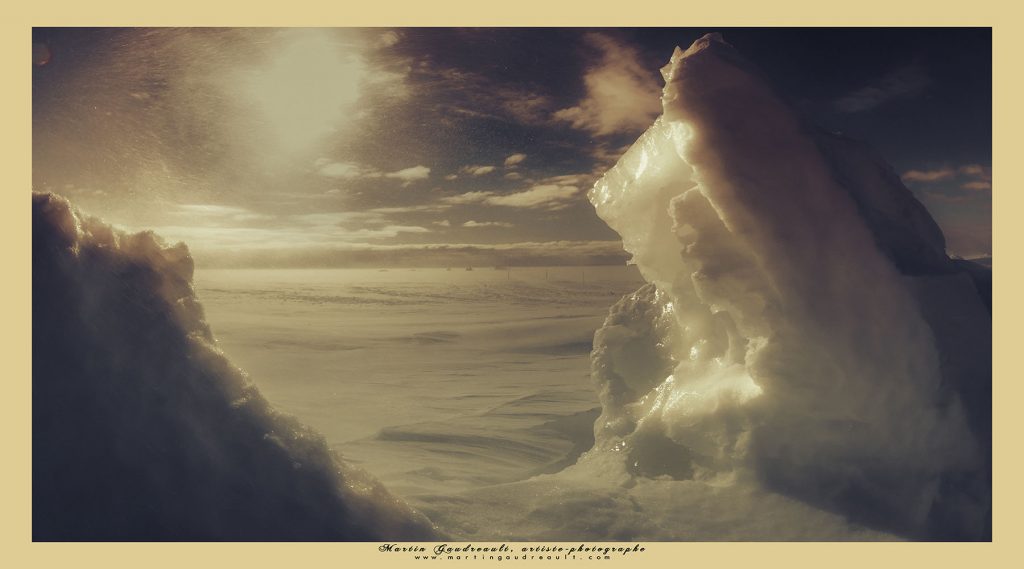
Contraction, Crossing Lac Saint-Jean by Bike, Digital photography, F11 1/500- 10 mm ISO 100
Photographing in black and white is a technique adapted to many scenes of nature. It is also particularly well suited to architectural photography. It draws the eye to geometric shapes, perspectives or contrasts of light. As a photographer, I can convey a message through black and white by getting to the point. Black and white is a very directive creative technique.
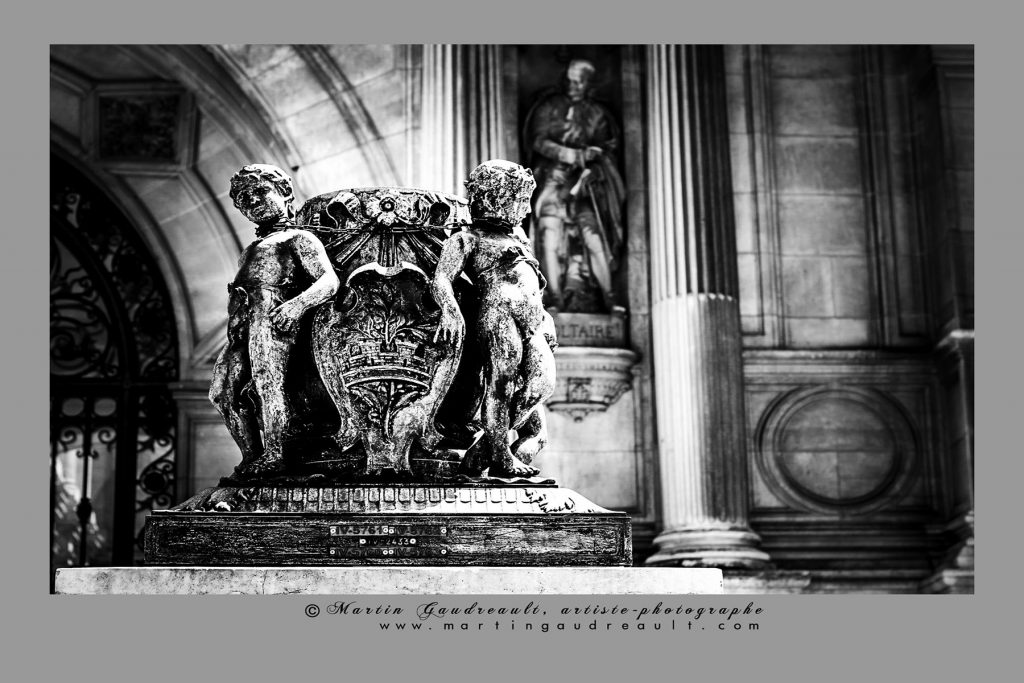
Les Angelots, Louvre Museum, Paris, Digital photography, F5 1/250- 50 mm ISO 100
The use of black and white is often synonymous with negative emotions when it is not. Rather, it demonstrates the aesthetics of a landscape, the purity of lines or the richness of textures. For my part, and in contrast to many photographers, I see black and white photography not as a symbol of nostalgia, but more as a particular vision of our universe.
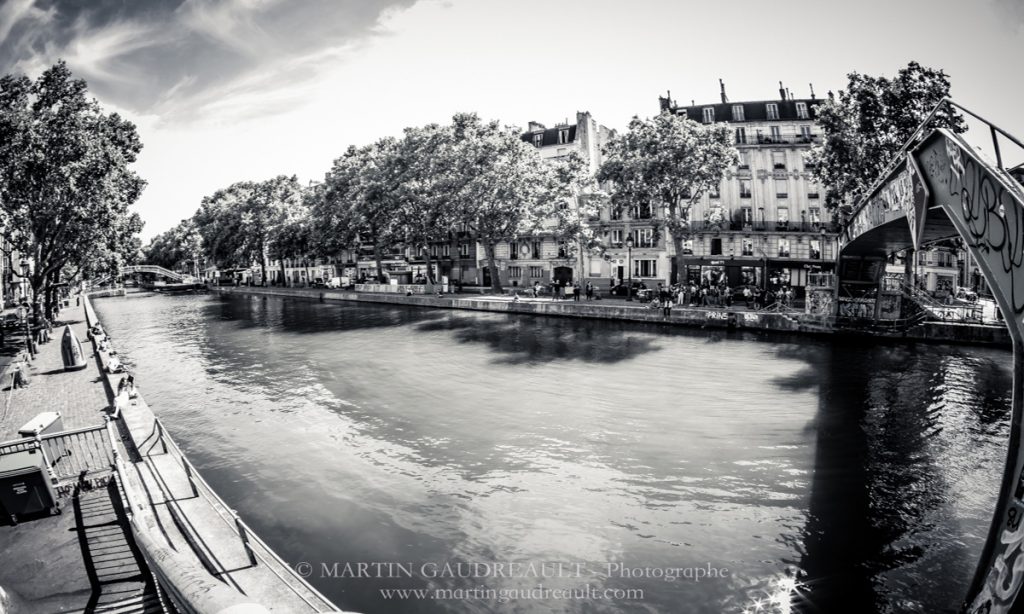
Romance in Paris, Canal Saint-Martin, Digital photography, F11 1/25- 10 mm ISO 100
Moreover, as human beings, we are surrounded by colours: colours of the seasons, clothes, animal colours, etc. With colour photography, we can very easily evaluate the time of its capture, while black and white is timeless. I could say that colour photography allows the photographer to use a more advanced language in terms of rendering, shapes, textures, etc. Black and white returns to the basis of the message by expressing the photographer’s raw emotion through his digital eye.
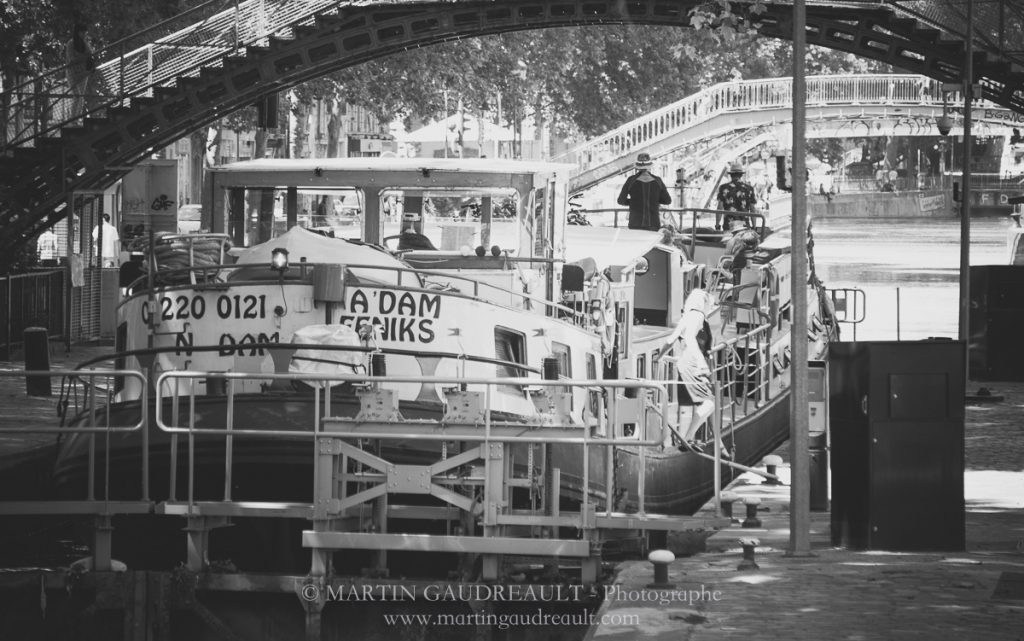
Romance in Paris #2, Canal Saint-Martin, Digital photography, F5,6 1/60 – 150 mm ISO 100
Nature has a wonderful way of combining colours; discussion on this use in your work.
It is mentioned that I am an image hunter and a film poet. I try to interpret the landscapes under the animated gaze of passion.
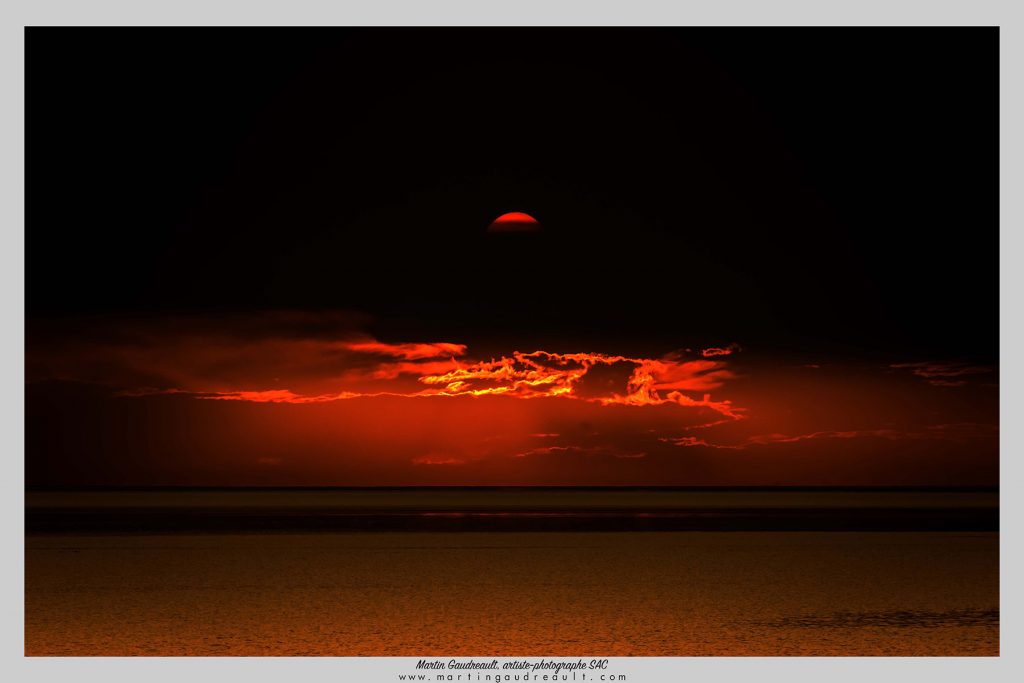
Zen, Digital photography, F13 1/80 – 175 mm ISO 100
The colours inspire me as much by their detailed palette as by the poetry they transmit to me. René Richard is one of the Canadian painters who has influenced me the most to date. He knew how to express the solitude of Canada’s great outdoors through the colours of the different seasons.
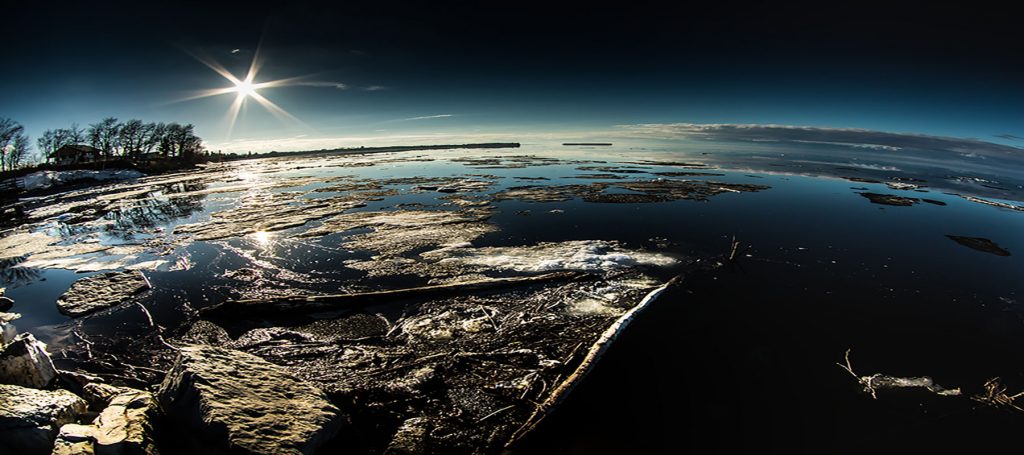
Happy Springtime, Digital photography, F22 1/200 – 10 mm ISO 100
Silver medal, International Prize of Professionals in Art 2018 – Mondial Art Academia
I like to use black and white occasionally, because it allows me to express a less polished vision of the moment, while colour photography allows me to exploit the tonal changes that reflect the present moment. The use of colour allows me to highlight changes in light (hue), their intensity (saturation) or their luminance.
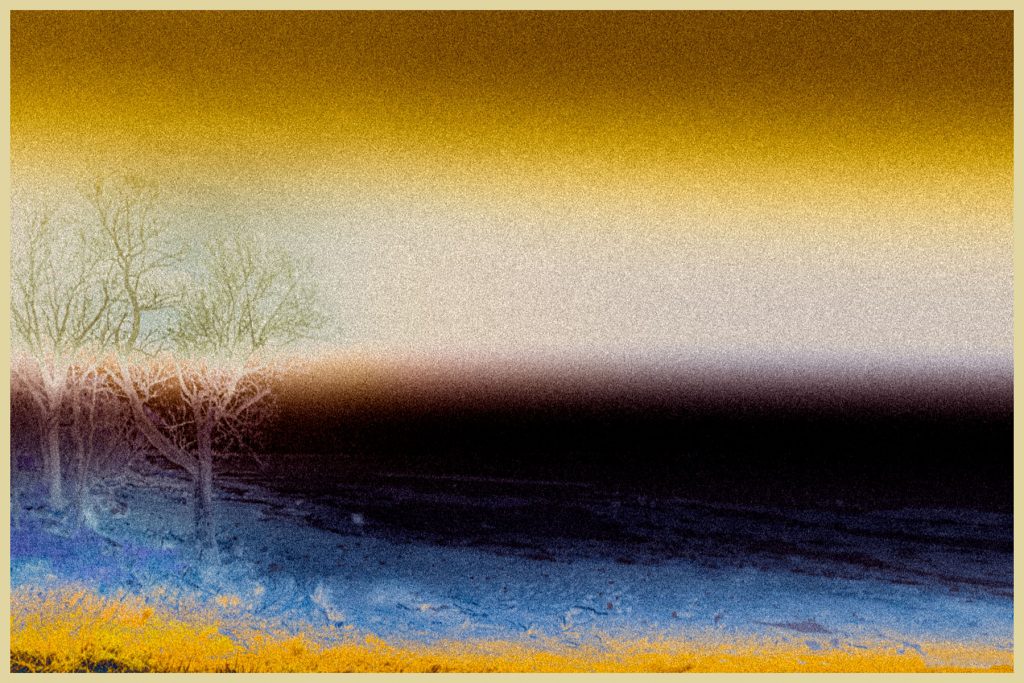
Minimalist Nature, Digital photography, F22 1/25 – 13 mm ISO 100, Post processing in Lightroom
Colour photographs have a distinctive personality according to the photographer’s eye. For my part, I like the two opposite ones, namely warm and cold colours. For me, photography is never a random image, it is a research, then a narrative and an awareness of the natural and silent beauty that exists all around us. The calm, silence and feeling of serenity are an integral part of my work.

North Star, Digital photography, F22 1/100 – 17 mm ISO 100, Sepia processing in Lightroom.
I don’t add anything during post-production. The effects are minimalist, thus respecting the original image, the authenticity of the moment captured, immortalized. I am a keen fan of the blue hour and the particularities of light at certain key times of the day.
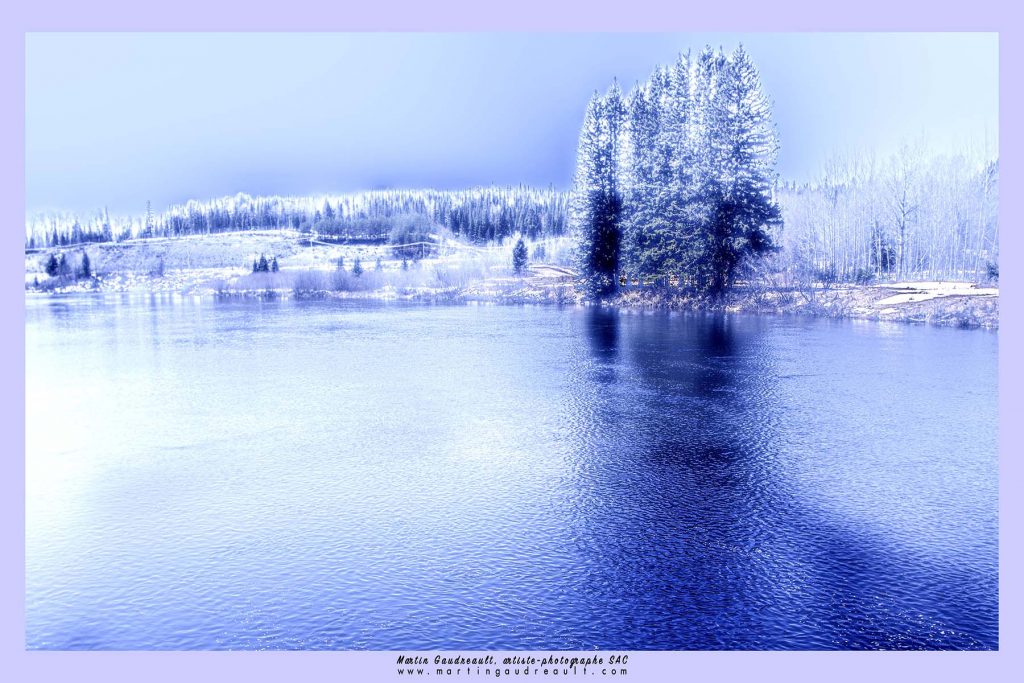
In the Early Morning, Digital photography, F11 1/160 – 22 mm ISO 100, Post processing in Lightroom
I always try to maintain the sensitive expression of the photographer, who feels emotions through his work tool, because a testimony is immortalized in a second from eternity. I thus express my very personal, often contemplative vision on diversity of Quebec landscapes and the elements that compose them, sometimes fragile and ephemeral.
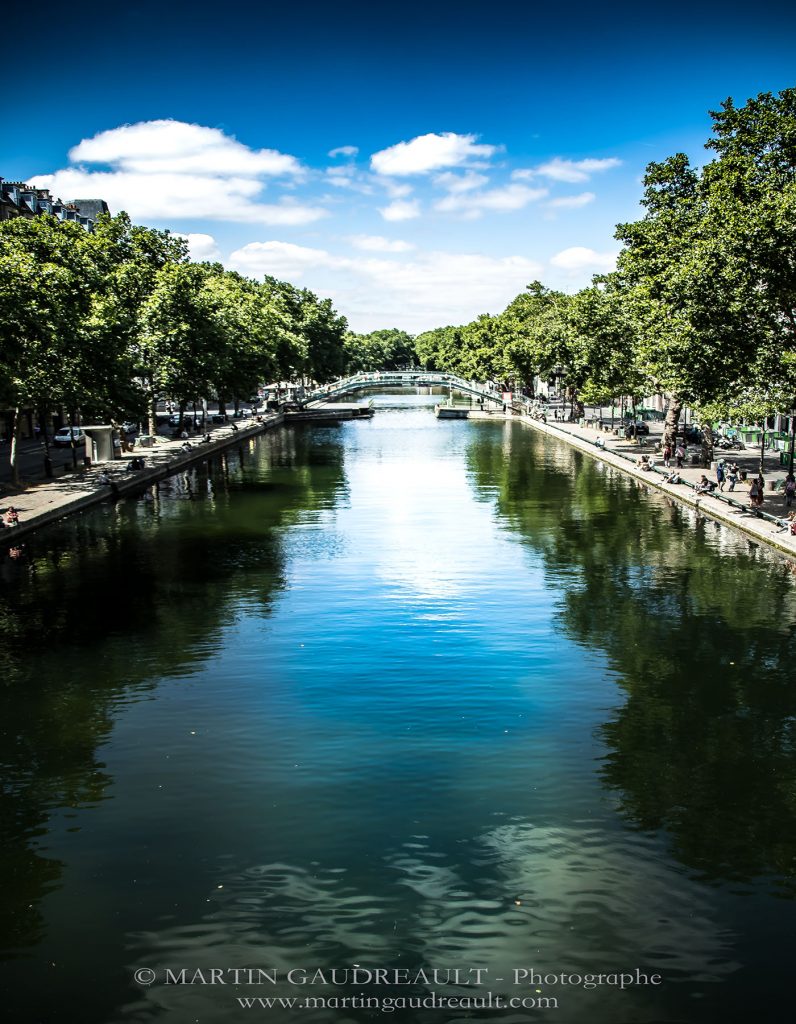
Canal Saint-Martin,Digital photography, F3,5 1/1000 – 18 mm ISO 100
In all humility, I offer a deeply optimistic look to the public, in order to make them live an experience through the image as much by its colours as by the peace that emerges from it.
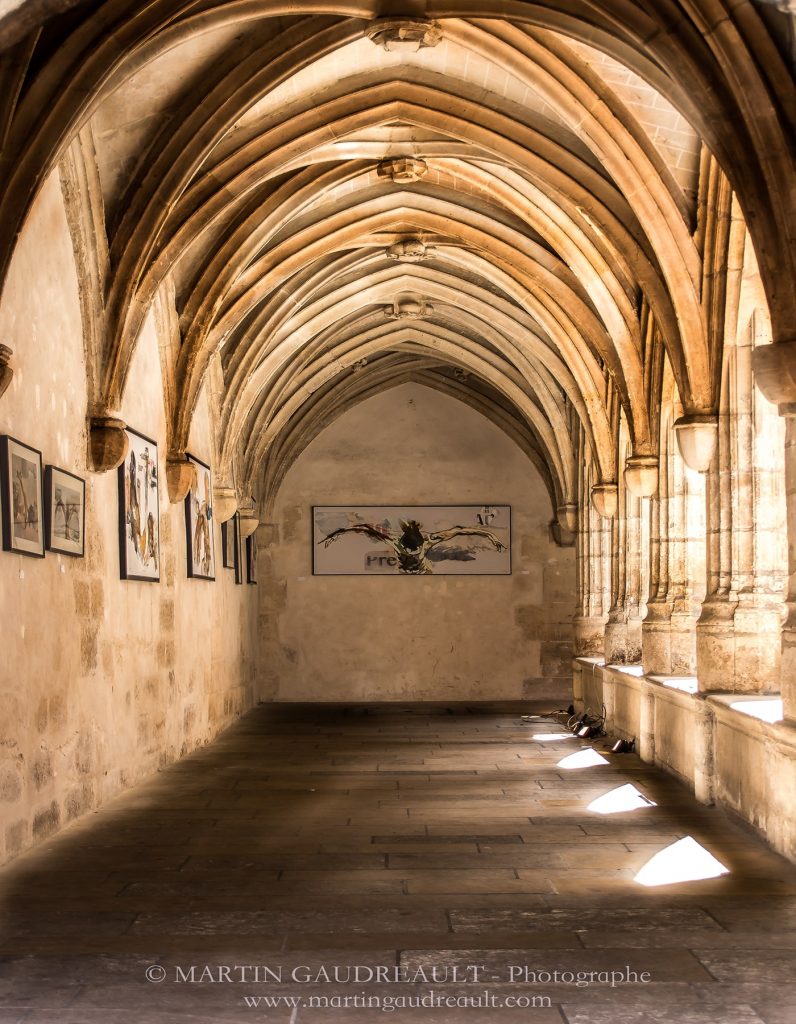
The Exhibition, Digital photography, F4,5 1/60 – 3 mm ISO 100
The sepia color allows me to give a “vintage” tone to my photos. I use it in certain contexts (such as architecture) to give a particular cachet to the photo especially since I am passionate about old buildings.
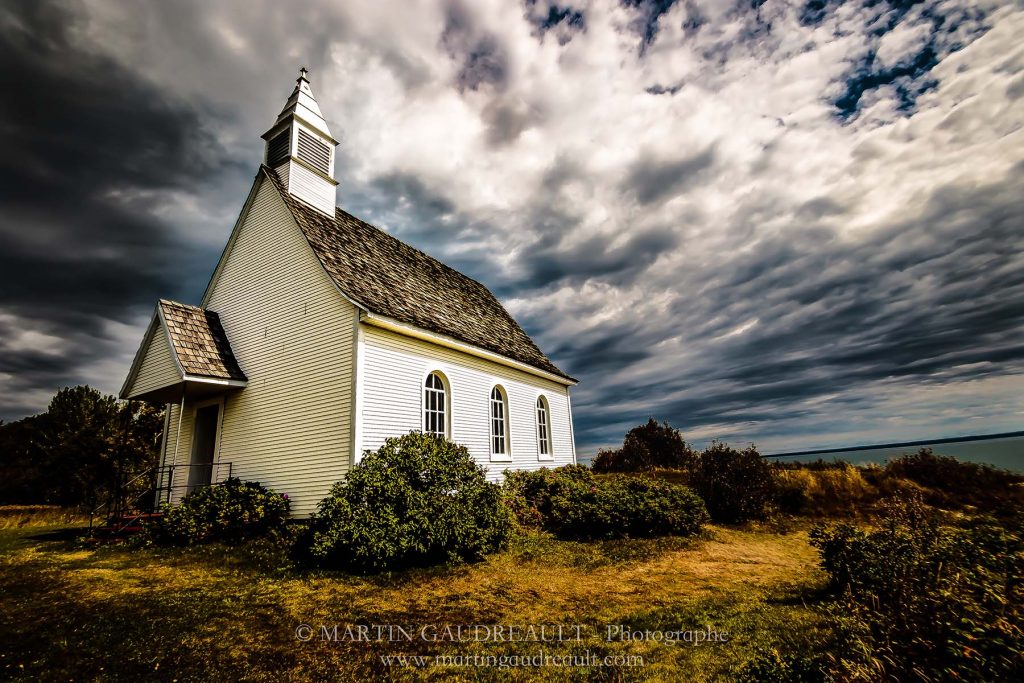 Goodness of Heaven, Digital photography, F4 1/2500 – 10 mm ISO 100 Post processing with lightroom
Goodness of Heaven, Digital photography, F4 1/2500 – 10 mm ISO 100 Post processing with lightroom
Scale is hard to show, discuss scale in your work.
I like to take pictures from below, because they will give the subject power.
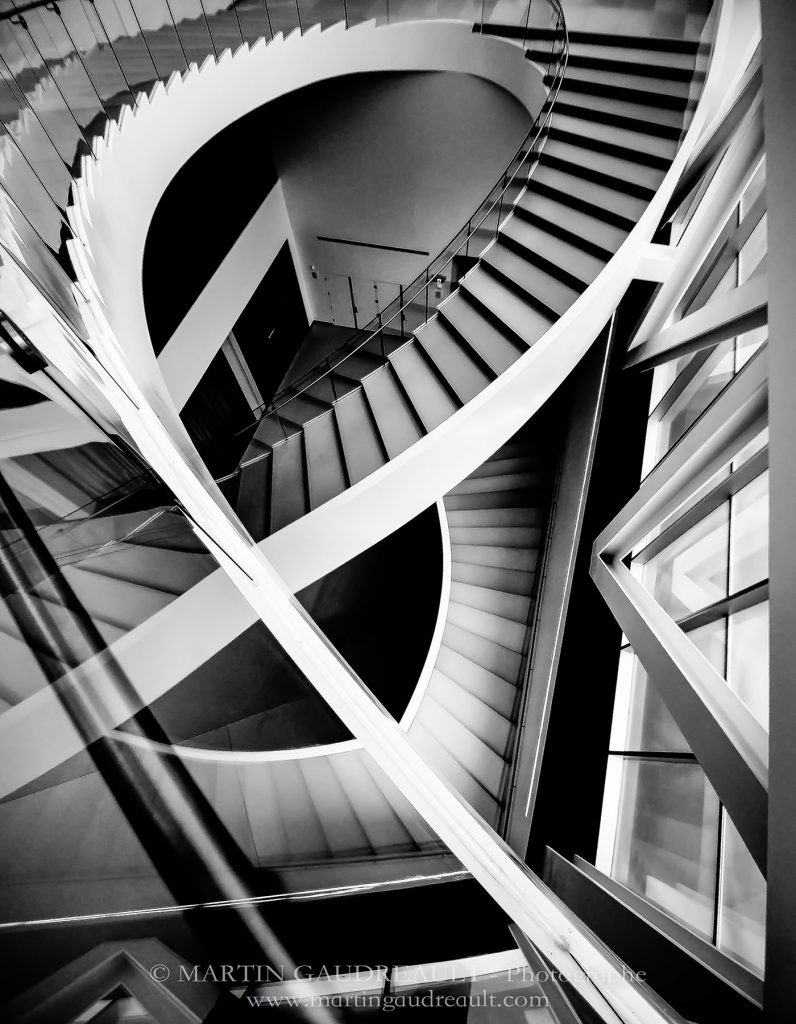
Enchevêtrement, ESCHER, Digital photography, F3,5 1/200 – 10 mm ISO 100, Musée National des Beaux-Arts du Québec – Pavillon Lassonde
The viewer thus has a different perspective and allows the main subject to be magnified. This technique gives the vanishing lines of a building, for example, an amplitude and will make a different effect for the eye. In some cases, (with animals or trees), the low angle will give us improbable angles and very often with a particular luminosity especially in the forest.
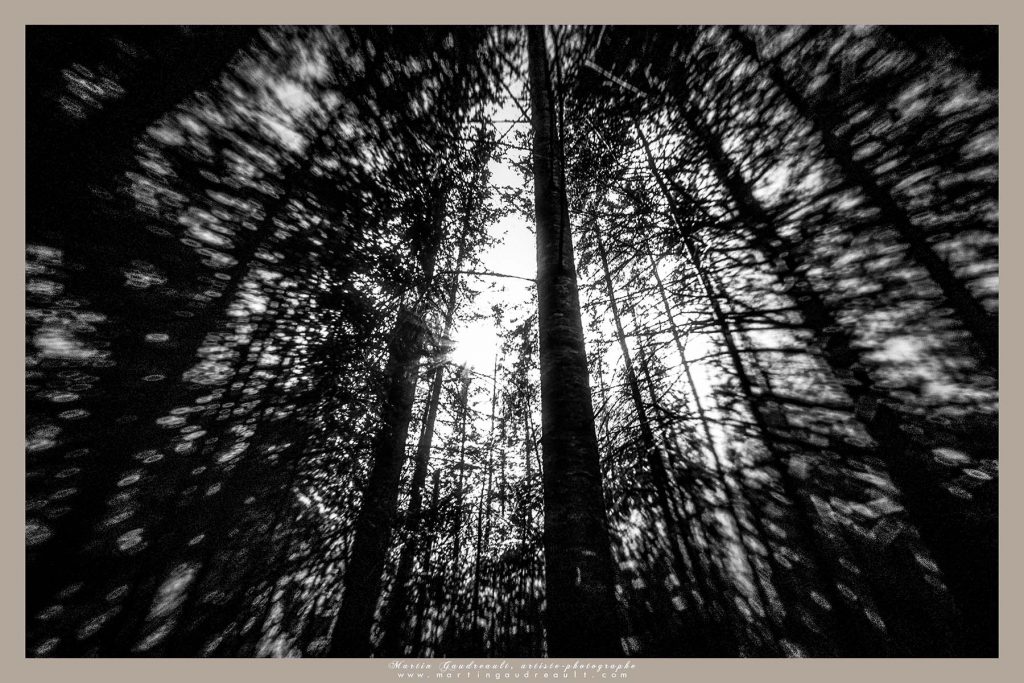
Heaven, Digital photography, F11 1/10 – 10 mm ISO 100
You often use a very small coloured image as the addition of colour controlling the viewers eye. Discuss.
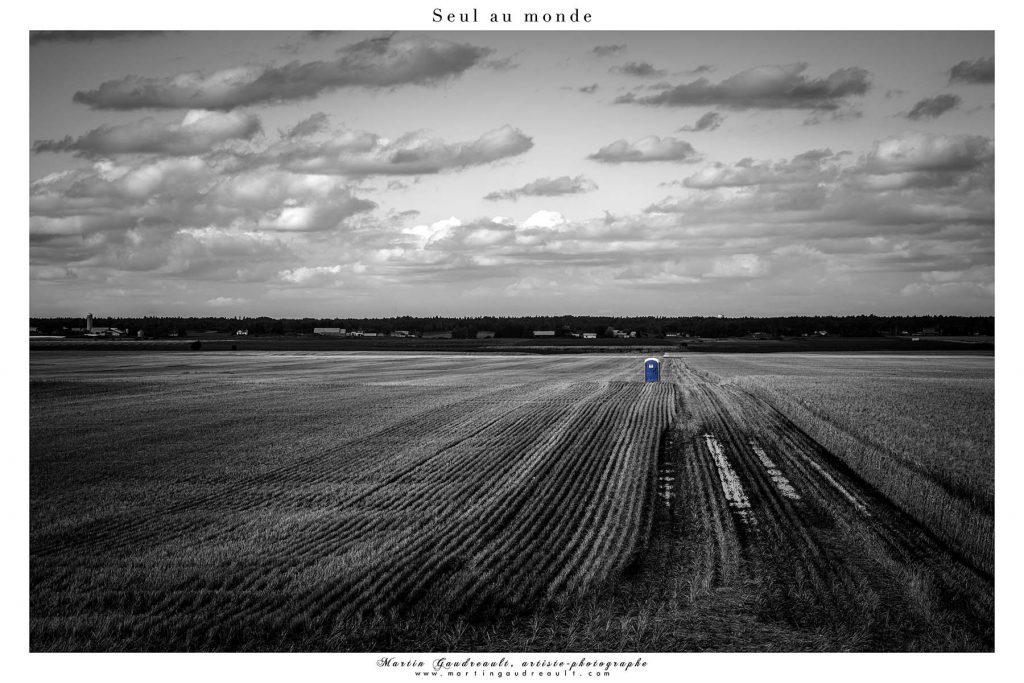 Seul au Monde, Digital photography, F11 1/125 – 60 mm ISO 100
Seul au Monde, Digital photography, F11 1/125 – 60 mm ISO 100
Preserving certain parts of the image that are occasionally coloured makes it possible to attract the eye to a particular element without taking anything away from the entire photographic composition. It is often a touch that will not take anything away from the message of the picture, will highlight the general subject.
What type/s of cameras do you use?
I use a Canon 7D MarkII camera with various lenses.
In your words discuss the importance of photography in recording history.
Let us refer to the invention of photography, no one suspected the importance of this discovery on the witnesses of the history of our humanity. As such, the Lumière brothers certainly had no idea that by filing more than 170 patents, mainly in the field of photography, they would pave the way for the explosion of photography as we know it today.
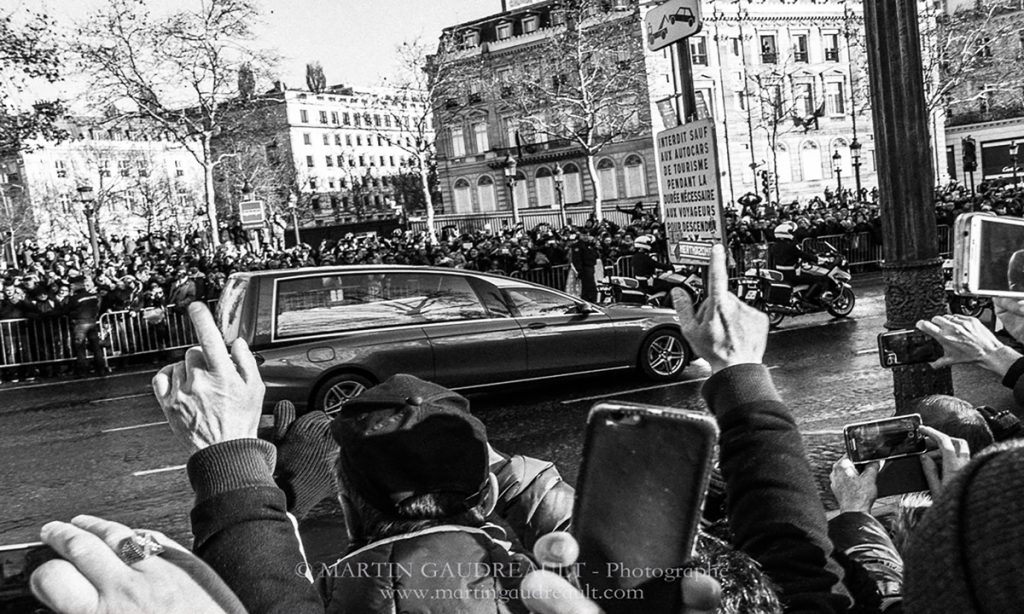
Adieu Johnny, Digital photography, F8 1/160 – 24 mm ISO 100
Photo, taken following the death of the French singer Johnny Hallyday,and his funeral procession in Paris
The photographic art was born and became a medium that was part of the visual arts family. Today, this medium occupies a prominent place in our society, rightly or wrongly, we are not here to debate it. You will not be surprised to learn that photography has been part of my life for several years and that this visual art allows me to immortalize the present moment. Photography is about looking beyond the image, feeling emotions, contemplating the scene, recognizing the right moment to trigger.
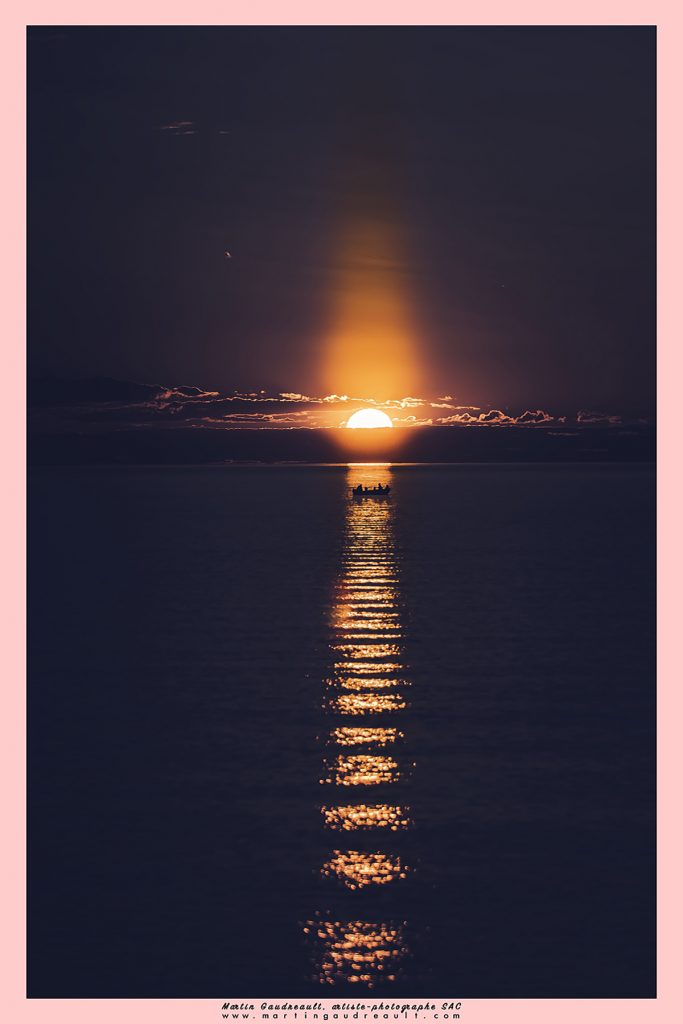
Grace filled moment, Digital photography, F2,8 1/5000 – 115 mm ISO 100
Behind each image there is a process, a reflection that is essential, a character to bring out. In all modesty, it is the artist’s eye that expresses itself.
In addition to promoting all these elements, photography allows us to take a perpetual look at our society, both in its happy or sad evolution according to the circumstances, but also in the everyday life of people. We all have family clichés that mark our lives. Birth, Wedding, Family celebrations to name a few.
Whether it is Small or Great, history is lived by peoples, written and perpetuated by images. Many clichés remind us of turning points in the history of humanity, such as the end of the World Wars, the fall of the Berlin Wall or, more recently, the migrant crisis. I have in mind this quote from the philosopher Roland Barthes: “What photography reproduces infinitely only happens once”. These few words summarize very well the importance of photography in recording history, because it is our history that we image!
Contact:
Martin Gaudreault
Email : martingaudreaultphotographie@hotmail.com
Website : www.martingaudreault.com
Deborah Blakeley, Melbourne, Australia
Interview by Deborah Blakeley, November 2019
Think a colleague or friend could benefit from this interview?
Knowledge is one of the biggest assets in any business. So why not forward this on to your friends and colleagues so they too can start taking advantage of the insightful information the artist has given?
Other artists you may be interested in:


